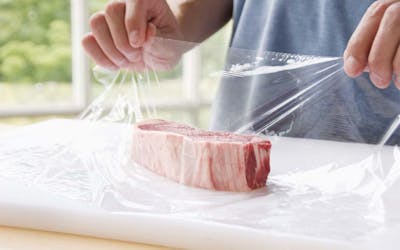Save on select Weber Works™ Accessories* Shop Now.
Resting and Salting Beef
One of the best things you can do for beef is give it a rest at room temperature before and after grilling. There are many reasons why. First, placing an ice-cold piece of meat on the grill quickly reduces the temperature of the cooking grate surface, thus minimizing the great searing benefit of caramelization (when sugars in the food are cooked quickly on the surface, creating an appealing texture and taste). Second, a large piece of meat that has been properly refrigerated will be very cold in the middle, where fats and juices will “gel up” or thicken. Trust us, you’d rather have those precious resources flowing evenly throughout the meat, bringing flavor to every bite. Third, allowing the temperature to even out means you won’t end up with a cut that’s too rare in the middle and overcooked on the outside. This is especially important for roasts and other thick cuts on the grill, where the outside can dry out “waiting” for the middle to reach the desired temperature. Fourth, because cold constricts beef fibers into a tougher texture, you’ll get more tender results grilling a warmed up and “relaxed” cut. Finally, for maximum flavor and juiciness, allow grilled beef to rest after you remove it from the grill. Resting allows those delicious juices that were driven by heat to the meat’s surface to ease back into the center, where you can enjoy them bite by bite.

It’s best to salt beef just a few minutes before grilling. That’s enough time for the salt to penetrate the meat a little, so the inside gets seasoned a bit as well as the outside. If you salt beef before refrigerating it, the salt absorbs moisture from the refrigerator and the “wet” meat tends to “steam” rather than “sear” to a nicely brown crust. Also, the salt draws some of the moisture out of the meat, which makes it drier overall. Now you know.
Related Skills
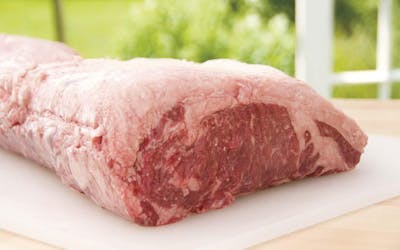
Mastering Red Meat
Butchering a Strip Loin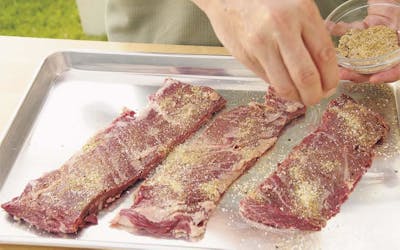
Mastering Red Meat
Preparing Skirt Steak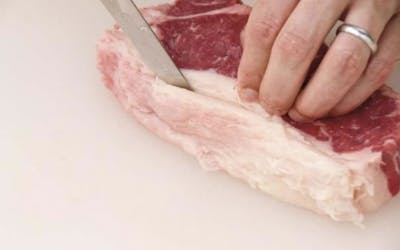
Mastering Red Meat
Trimming a Strip Steak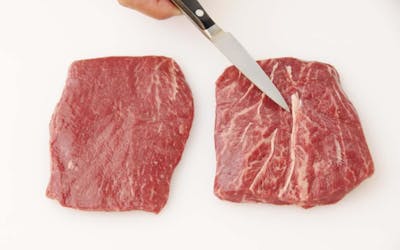
Mastering Red Meat
Preparing Flat Iron Steaks
Mastering Red Meat
Preparing Strip Steaks